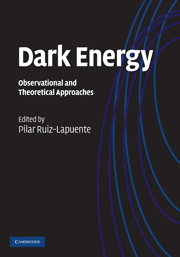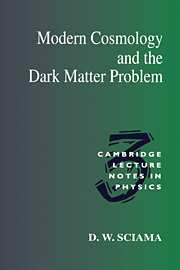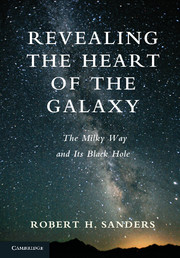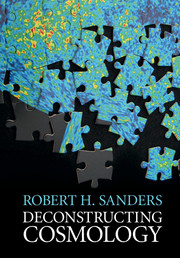The Dark Matter Problem
Most astronomers and physicists now believe that the matter content of the Universe is dominated by dark matter: hypothetical particles which interact with normal matter primarily through the force of gravity. Though invisible to current direct detection methods, dark matter can explain a variety of astronomical observations. This book describes how this theory has developed over the past 75 years, and why it is now a central feature of extragalactic astronomy and cosmology. Current attempts to directly detect dark matter locally are discussed, together with the implications for particle physics. The author comments on the sociology of these developments, demonstrating how and why scientists work and interact. Modified Newtonian Dynamics (MOND), the leading alternative to this theory, is also presented. This fascinating overview will interest cosmologists, astronomers and particle physicists. Mathematics is kept to a minimum, so the book can be understood by non-specialists.
- Discusses current attempts to directly detect dark matter locally, and the implications for particle physics
- Comments on the sociology of developments, demonstrating how and why scientists work and interact
- Presents Modified Newtonian Dynamics (MOND) - the leading alternative to the theory
Reviews & endorsements
'This is a fascinating detective story, described in a personal and very readable way … The appendix presents a beautiful summary of relevant definitions of astronomy. Black and white photos, graphs and drawings accompany the text. There are 6 pages of references and a 4-page index.' Bill Howard, CHOICE
'This is a splendid and timely book and the reader is rewarded with an insight into the tantalising conflict between the majority proponent view of dark matter and the competing viewpoint embodied in the Modified Newtonian Dynamics (MOND) hypothesis … Professor Sanders is an experienced theorist in the field of dark matter astrophysics and is eminently qualified to address this question and he does so with notable clarity. His book is written with the scientific community in mind and the language is uncompromisingly scientific but it is nonetheless fathomable by the non-specialist. The Dark Matter Problem will find an easily accessible place on this reviewer's bookshelf for some time.' Brian Parsons, FAS Newsletter
'In this readable and enjoyable book, Sanders takes us through the historical development of the theory of dark matter … The Dark Matter Problem will benefit advanced undergraduates, graduate students, and some researchers. … Students and professionals working in the field may receive this book as a training tool that highlights the current deficiencies of the dark matter paradigm.' Physics Today
Product details
June 2010Adobe eBook Reader
9780511770968
0 pages
0kg
This ISBN is for an eBook version which is distributed on our behalf by a third party.
Table of Contents
- 1. Introduction
- 2. Early history of the dark matter hypothesis
- 3. The stability of disk galaxies: the dark halo solutions
- 4. Direct evidence: extended rotation curves of spiral galaxies
- 5. The maximum disk: light traces mass
- 6. Cosmology and the birth of astroparticle physics
- 7. Clusters revisited: missing mass found
- 8. CDM confronts galaxy rotation curves
- 9. The new cosmology: dark matter is not enough
- 10. An alternative to dark matter: Modified Newtonian Dynamics
- 11. Seeing dark matter: the theory and practice of detection
- 12. Reflections: a personal point of view
- Appendix
- References
- Index.







